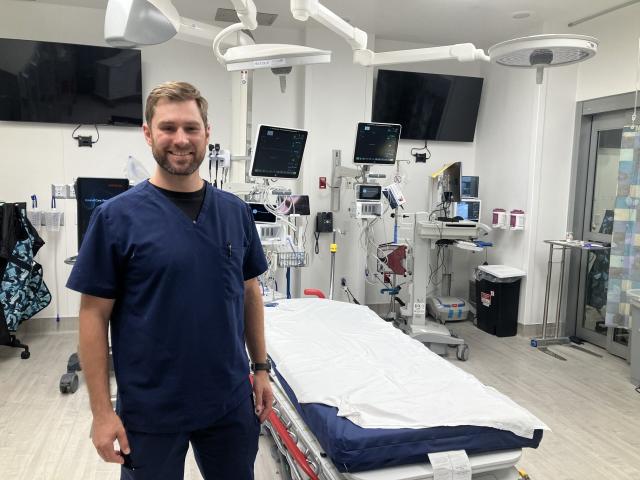As the sun beats down on Phoenix, Arizona, where temperatures often soar past 110°F, emergency room doctors face an increasing influx of patients suffering from heat-related illnesses. The intense heat can transform everyday activities into life-threatening scenarios. From heatstroke to contact burns, the ER doctors in Phoenix hospitals are on the front lines, treating the devastating effects of extreme heat on the body.
Heatstroke: The Most Severe Heat-Related Illness
When Phoenix reaches its highest temperatures, heatstroke cases skyrocket. The human body can only handle so much heat before it begins to shut down. Heatstroke occurs when the body’s internal temperature rises above 104°F (40°C), making it impossible for the body to regulate its temperature naturally. This condition can lead to organ failure, brain damage, or even death if not treated immediately.
ER doctors are trained to identify and manage heatstroke as soon as a patient arrives. The most common symptoms include confusion, dizziness, lack of sweating despite the heat, and a rapid pulse. Once a heatstroke diagnosis is confirmed, doctors take immediate action to cool the patient’s body down, typically using ice packs, cooling blankets, or cold IV fluids.
“We see a significant rise in heatstroke cases during Phoenix’s hottest months,” says Dr. Mark Thompson, an ER physician at Banner Health. “Heatstroke can develop rapidly, especially in people who are exposed to direct sunlight for extended periods or those who engage in outdoor activities without proper hydration.”
Who’s at Risk of Heatstroke?
While anyone can fall victim to heatstroke, certain groups are more vulnerable. The elderly, young children, athletes, and outdoor workers are particularly at risk. Phoenix’s homeless population is also especially vulnerable due to prolonged exposure to the extreme heat without access to air conditioning or adequate hydration.
In addition, people with chronic health conditions like heart disease, diabetes, or respiratory illnesses may find it harder to manage the heat. Medications can also play a role in increasing susceptibility to heat-related illnesses by interfering with the body’s ability to cool itself.
Contact Burns: Another Danger on Phoenix’s Hottest Days
Heatstroke isn’t the only concern during Phoenix’s hottest days. The sweltering heat turns surfaces like asphalt, metal, and concrete into potential hazards, causing contact burns. Walking barefoot or touching a car door handle that’s been exposed to the sun can result in second-degree burns within seconds.
ER doctors in Phoenix frequently treat burn victims who have unknowingly come into contact with dangerously hot surfaces. “It’s not uncommon for people to be admitted for serious burns just from walking outside,” shares Dr. Susan Davis, a burn specialist in Phoenix. “The pavement can reach temperatures upwards of 160°F, enough to cause burns within seconds.”
Children, pets, and those who are unaware of the dangers of hot surfaces are often the most affected by contact burns. In many cases, patients require hospitalization to treat severe burns with antibiotics, dressings, and in extreme cases, skin grafts.
Preventing Heat-Related Illnesses
Preventing heatstroke and contact burns in Phoenix requires extra vigilance. ER doctors encourage residents and visitors to take certain precautions when temperatures peak:
- Stay Hydrated: Drink plenty of water throughout the day, even if you’re not thirsty. Dehydration can accelerate the onset of heatstroke.
- Limit Sun Exposure: Stay indoors during the hottest parts of the day, typically between 10 a.m. and 4 p.m. If you must be outside, wear lightweight, loose-fitting clothing, and apply sunscreen regularly.
- Check the Surface Temperature: Before walking barefoot on asphalt, playgrounds, or other outdoor surfaces, test the temperature with your hand.
- Cool Down Quickly: If you start feeling overheated, move to a shaded or air-conditioned area immediately and drink cool fluids.
Emergency Response to Heat-Related Illnesses
In Phoenix, emergency services are well-versed in managing heatstroke and burns. However, time is of the essence when dealing with these conditions. If you or someone else is showing signs of heatstroke—such as confusion, a rapid heartbeat, or a lack of sweating—call 911 immediately. For contact burns, seek medical attention if the burn is larger than a few inches, becomes infected, or covers sensitive areas like the face, hands, or joints.
ER doctors advise anyone living in or visiting Phoenix to treat heat-related illnesses with the seriousness they deserve. What might seem like a minor inconvenience, such as mild dizziness or a hot pavement, can quickly turn into a medical emergency in extreme heat.
Phoenix’s blistering temperatures can be as dangerous as they are predictable, leading to an influx of heatstroke and contact burn cases. ER doctors are trained to act swiftly to save lives and reduce long-term damage, but prevention is key. By staying hydrated, avoiding direct sun exposure, and being mindful of hot surfaces, residents and visitors can avoid unnecessary trips to the ER.
Stay informed, stay hydrated, and stay safe. For more updates on health tips and safety, check out our articles at Digital Digest.





